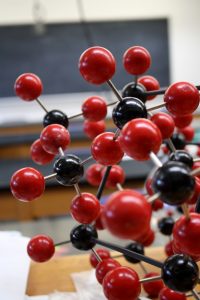 by Derek Bruff, visiting associate director
by Derek Bruff, visiting associate director
This spring CETL hosted a faculty learning community on the topic of active learning in large STEM courses. Over a dozen faculty from biology, chemistry, mathematics, physics, and other departments met every other week, mostly on Zoom, to share and discuss shared challenges teaching large courses, particularly introductory courses. I organized and facilitated the learning community, and one of the fun parts of that work was selecting the readings for each of our meetings. I thought I would share the reading list here on the new CETL blog, in case its useful to other educators or educational developers.
Session 1: Introductions
For our first meeting, we shared introductions and challenges and discussed a couple of modern classics of the STEM education research literature:
- “Active learning increases student performance in science, engineering, and mathematics,” Freeman et al (2014), https://www.pnas.org/doi/full/10.1073/pnas.1319030111
- “Active learning narrows achievement gaps for underrepresented students in undergraduate science, technology, engineering, and math,” Theobald et al. (2020), https://www.pnas.org/doi/10.1073/pnas.1916903117
Session 2: The Coverage Challenge
By far, the most common challenges shared by learning community members was the need to cover a lot of content in these large courses. We tackled that challenge head on in our second meeting using these readings:
- “The tyranny of content: ‘Content coverage’ as a barrier to evidence-based teaching approaches and ways to overcome it,” Peterson et al. (2020), https://www.lifescied.org/doi/10.1187/cbe.19-04-0079
- “Worried about cutting content? This study suggests it’s OK,” Supiano (2022), https://www.chronicle.com/newsletter/teaching/2022-07-07
- “Inclusive and active pedagogies reduce academic outcome gaps and improve long-term performance,” Dewsbury et al. (2022), https://journals.plos.org/plosone/article?id=10.1371/journal.pone.0268620
Session 3: The Flipped Classroom
One response to the coverage challenge is to shift some of the learning outside of the rather limited class time we have with students. The flipped classroom was thus the topic of our third discussion, using these readings:
- Flipped Learning: A Guide for Higher Education Faculty, Talbert (2017). You can read most of the first chapter online. See also his final definition of flipped learning.
- “114 studies on flipped classrooms show small payoff for big effort,” Barshay (2020), https://hechingerreport.org/proof-points-114-studies-on-flipped-classrooms-show-small-payoff-for-big-effort/
- “The impact of a flipped classroom model of learning on a large undergraduate statistics class,” Nielson et al. (2018), https://iase-web.org/ojs/SERJ/article/view/179.
Session 4: Student Reactions
How do students respond to active learning instruction? It’s a mixed bag. See these readings:
- “Measuring actual learning versus feeling of learning in response to being actively engaged in the classroom,” Deslauriers et al. (2019), https://www.pnas.org/doi/full/10.1073/pnas.1821936116
- “What I wish my instructor knew: How active learning influences the classroom experiences and self-advocacy of STEM majors with ADHD and specific learning disabilities,” Pfeifer et al. (2022), https://www.lifescied.org/doi/10.1187/cbe.21-12-0329
Session 5: Active Learning Classrooms
One reason for hosting this faculty learning community is the new science building on campus set to open in fall 2024. It’s full of active learning classrooms!
- “Separated by spaces: Undergraduate students re-sort along attitude divides when choosing whether to learn in spaces designed for active learning,” Ralph et al. (2022), https://journals.sagepub.com/doi/10.1177/14697874221118866 or https://libkey.io/libraries/1153/articles/533235795/full-text-file?utm_source=api_597
- “Transformation of classroom spaces: traditional versus active learning classroom in colleges,” Park & Choi (2014), https://link.springer.com/article/10.1007/s10734-014-9742-0
Session 6: Show and Tell
We didn’t have any readings for our sixth meeting. Instead, participants were invited to share a lesson plan or activity they had used in their courses.
Session 7: Group Work
Since active learning often involves group work, we took a deep dive into organizing and facilitating groups in our seventh session.
- “Evidence-based teaching guide: Group work,” Wilson, Brickman, & Brame (2017), http://lse.ascb.org/evidence-based-teaching-guides/group-work/
Session 8: Exams and Evaluation
Our final meeting fell on the last week of classes, which made it an appropriate time to talk about evalution.
- “Science exams don’t have to be demoralizing,” Clements & Brame, https://cft.vanderbilt.edu/science-exams/
We will continue the faculty learning community in some form in the fall. If you’re a STEM instructor at the University of Mississippi and are interested in participating, please let me know!
Sign up to get an email whenever we post something new on the blog